Top 10 Most Outdated Ancient Medical Treatments
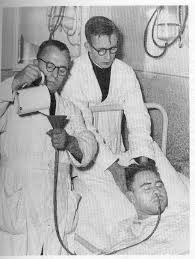
Medicine, which is one of the oldest man's profession in history has continue to be the one of the most respected professions ever .
However, there are innovations in every field. Additionally, these have served as a foundation for global growth. Since the beginning, there has been a lot of progress in the medical field. Tricycles that were made just for patients were used to move patients around in the past.
Several surgical instruments turned out to be more useful than safe. Iron instruments frequently rusted, resulting in infections and other complications.
However, in the modern era, massive and rapid advancements in all medical fields have proven to be beneficial and have simply extended human life expectancy.
Let's take a look at a few medical procedures and treatments that are no longer used in most parts of the world. The following is a list of ten dated medical procedures.
Top 10 Most Outdated Ancient Medical Treatments
- Cocaine comes to the rescue
- Maggot debridement therapy
- The electrical impotence method
- Trepanation Treatment
- Mercury Treatment
- Fire Cupping
- Induced Seizures
- Bloodletting as a form of treatment
- Insulin Therapy
- Electroconvulsive Therapy (ECT)
1. Cocaine comes to the rescue
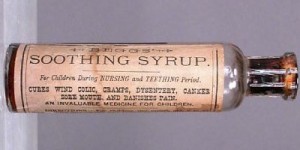
READ ALSO » Top 10 Outdated Gadgets Still In Use
The sensation that these drugs have when they pass through one's veins and immediately reach the stress-reliever part of the brain is similar to heaven.
However, little is known about the harm it does to the body. Despite this, it was used as an excellent medical treatment to treat a variety of disorders and illnesses.
In the nineteenth century, people were either too busy (or lazy) to complete even the most fundamental of tasks, such as applying a headache balm or responding to the calls of nature. The mothers of the nineteenth century were the most affected by this.
They had trouble managing a toddler or even babysitting them. As a result, they succumbed to a novel solution designed specifically for these issues with ease.
The majority of issues were resolved by quickly putting the baby to sleep with a soothing syrup. In fact, it was a bottle with the maximum amount of drugs in it.
To assist the infants in falling asleep, a special bottle containing all of the known narcotics was given to them. In some cases, it worked, while in others, it was fatal. In those days, people were unaware of the negative effects that taking these drugs regularly could have on the body.
However, in the end, it was discovered that this syrup contained heroin, morphine sulfate, chloroform, powdered opium, morphine sulfate, and a few other illegal substances.
READ ALSO » How To Become A Medical Doctor: Top 10 Success Tips
During the time this method was in use, many toddlers and other individuals who ingested them were found dead the following morning. Naturally, it was ineffective. Another treatment that no longer works.
2. Maggot debridement therapy

This treatment stands out from the long list of treatments that have been used in the past. Maggots are known to consume dead and decaying materials.
This was used to treat open wounds, blisters, and other conditions back then. Maggots are used in this treatment, which is also known as the larva therapy.
The maggot larvae are applied to the unhealed wound and covered with a special dressing that must remain in place for a few days without being moved.
This is to stop the larvae from migrating and to prevent external infection of the open wound. The larvae would also stop further infections from spreading by slowly eating away at the dead skin cells that surround the wound.
As a result, the rate at which the wound heals is sped up. Although it doesn't hurt too much, the patient may feel a tingling sensation. Simply because it sounded disgusting to have something alive eating away at your wound, many would not prefer this.
3. The electrical impotence method
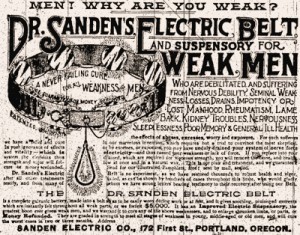
Male impotence was a major issue even in ancient times. A man who was unable to conceive at the time was marginalized and regarded as socially inept. In those days, the person would have been embarrassed by an impotent man. However, when electricity was developed, the entire world literally shone brightly.
By the beginning of the nineteenth century, when people knew about the properties and uses of electricity, researchers and doctors wanted to see how it affected the body.
READ ALSO » 10 Most Rare Medical Conditions You’ve Never Heard Of
They quickly came up with the idea that electrifying a specific part of the body would make it do something else. When it was discovered that the brain sent electric pulses to all parts of the body, which caused them to respond and behave as intended, a lack of activity indicated that the electric pulses were sent incorrectly or in a strange way to that area.
As a result, they developed a device known as a bride that resembled a horse belt. The electric pulses sent out by the belt, which was worn around the waist, would make a first-time wearer scream in pain. However, this method only worked for a short time to treat impotence.
4. Trepanation Treatment:

If drawing blood seemed gross, this method would be on a higher scale. During the stone age, people believed that medicine was the work of evil spirits who possessed the unfortunate and made him sick.
As a result, techniques were developed with these considerations in mind, and the majority of them had no scientific justification at all. The majority of inter-cranial disorders and head-related conditions were treated with this method.
A hole was drilled into the patient's skull using a special instrument in this method to reveal the grey matter within.
Additionally, it was held that the patient would be cured of their illness if the evil spirit that was ensnared in their body were to break free and flee.
As a result, rituals intended to expel the evil spirit or call out to the good spirits for assistance frequently followed this method.
Even though drilling a hole in your head sounds dangerous, it did kill a lot of people, and people at the time thought it was the work of evil spirits who wanted revenge by killing the unfortunate patient.
Additionally, trepanation was a type of surgery that was used to repair broken bones in head wounds. The term craniotomy is used medically to refer to a more modern, safer version that is used by doctors today. It has a higher success rate than trepanation and is utilized for neurological procedures.
5. Mercury Treatment
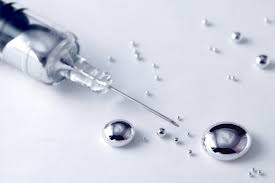
We make use of this element because thermometers depend on it. However, it has been discovered that Mercury was utilized long before thermometers were invented by humans.
This one element has always captivated humans for the simple reason that it does not adhere to any surface and possesses a natural luster that many people considered precious.
However, mercury has a significant application in the medical field. Even though we now know that this liquid metal is extremely toxic, ancient civilizations used it to treat a variety of ailments.
It was used to treat almost every condition in the book, in small doses, including chest pain, issues with the heart and liver, muscle spasms.
According to ancient beliefs, it was one of the most significant elements and was regarded as celestial, a gift from the gods.
If you didn't have a small amount of this liquid metal in your body, you would have been considered weak a century ago.
However, due to the toxic nature of mercury, many people died as a result of mercury ingestion in the past. However, due to a lack of knowledge at the time, people blamed their lifestyle and the deceased, claiming that they were too weak by nature.
However, during its many years as a popular treatment, it did some good. It was used to treat sexually transmitted diseases (STDs), and there is evidence that it was very effective. Despite having a success rate of approximately 50%, it significantly decreased the life expectancy of those treated.
6. Fire Cupping
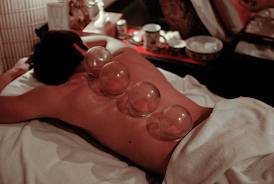
At first glance, this method looks like something out of a movie. Yes, it was featured in the well-known film Karate Kid. Archaeological finds indicate that this treatment, one of the oldest ever used, is approximately 1,000 years old.
The treatment's name literally explains how it works, and it only makes use of the fundamental idea of heated air creating a vacuum. Among the most common conditions that can be treated using this method are congestion, arthritis, chest pain, muscle cramps, and sprains.
Special cups with particular dimensions are utilized in this method. The cup is filled with vacuum that is produced by heated air and then heated by fire.
The area that needs to be treated is then held onto the patient's skin with these. The cups naturally adhere to the surface of the skin due to the vacuum, and this method is typically followed by a slow, gradual massage of the affected area.
It was most commonly used in ancient China, and although it is no longer practiced in other parts of China or the world, certain sects in China still believe it is one of the best ways to treat body disorders. There are no known negative effects from this approach.
Despite the fact that it may prove to be an excellent stress reliever, there was no evidence to support its effectiveness. Many people are still unsure of how this technique actually works.
7. Bloodletting as a form of treatment
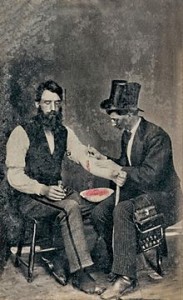
The ancient Greeks made significant contributions to science and mathematics. This technique, also known as Bleeding, was very common even among the ancient Mesopotamians. One of the few antiquated treatments that was used for a very long time was bloodletting.
The only reason it was thought to be very effective was because it spread quickly to other parts of the world. It spread to Mesopotamia from the Greeks, then to the Egyptians, Mayans, Aztecs, and other major ancient civilizations. It was thought that shedding some bad blood would also eradicate the disease.
Even though it was thought to be very effective, it actually hurt the people receiving it and naturally caused a lot of blood loss. In this technique, a deep cut was typically made in the patient's hands, close to the vein, where blood flows quickly. High blood pressure caused an immediate outpouring of blood, which was believed to bring the disease with it.
On the other hand, after treatment, the cut skin didn't seal properly, which led to infections and blood loss, which made the patient very weak. Despite these drawbacks, it was used until the beginning of the nineteenth century. Later, the safer blood transfusion method was used in its place.
8. Induced Seizures

At the beginning of the 1930s, a Hungarian pathologist by the name of Ladislas Von Meduna noticed that the majority of his epileptic patients gradually developed psychotic symptoms and were soon found to be epileptic.
Patients who were suffering from schizophrenia were also observed to be doing this. He then came up with an odd medical treatment that made him famous and well-known. Anticonvulsants and other medications known to treat epilepsy did not affect about 20% of his patients who had epilepsy.
Sadly, depression set in after a few weeks of developing psychotic symptoms and the epilepsy being cured. Antidepressants proved ineffective because his patients' marked mood shifts were easily observable.
As a result, Ladislas came up with an odd treatment plan that involved injecting a mixture of camphor oil and oil directly into the bloodstream of some of his patients who had catatonic schizophrenia, a severe form of schizophrenia.
The mixture caused seizures as soon as it spread throughout the body. Using an external medical mixture, this was the process of creating induced seizures.
The patients gradually recovered from their disorders as a result of these seizures, which somehow reduced the effects of depression. To put it another way, his method was found to be 50% successful. However, Ladislas had devised it as a mere attempt because no one could clearly explain why this method worked at the time.
9. Insulin Therapy
Is an additional treatment option for schizophrenics and other mental illnesses. Other major diseases and disorders unrelated to mental illness were also treated using this approach.
The doctors were of the opinion that certain diseases could be cured by increasing the amount of insulin the body produced.
In the years that followed, the medical field was still in its infancy and numerous brand-new theories and discoveries were still being tested.
As a result, the majority of doctors experimented with or applied their newly discovered theories to specific patients. Soon, rumors started to circulate that some doctors were testing patients and carrying out illegal medical procedures on physically disabled patients without their consent.
As a result, stringent measures to prevent similar incidents in the future were developed by the medical boards. In order to achieve the desired changes, the patient was literally shocked in this method. This was accomplished not by administering an electric shock, but rather by raising the insulin level in the body, which naturally triggered a seizure. Again, the patients gradually falling into a coma was the main issue that was observed. After a coma, some doctors believed that the body would heal itself and return to normalcy.
10. Electroconvulsive Therapy (ECT)
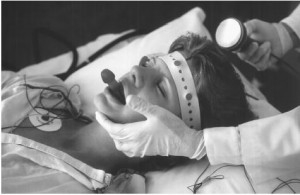
In 1938, an Italian psychiatrist by the name of Ugo Cerletti noticed that electrocuting pigs made it much simpler to slaughter them.
He found out later that pigs were briefly stunned and paralyzed by a mild electric shock that was given to them.
Taking this as a source of inspiration, he quickly developed a method for administering a mild shock to his patients directly to the head as an anesthetic, temporarily rendering them unconscious.
When he tried injecting with a local anesthetic, it proved to be a challenging task because his typically mentally challenged patients did not cooperate as well as other patients might. For the treatment of a number of mental illnesses, including bipolar disorder, depression, catatonia, and schizophrenia, this method was used successfully.
It was discovered that this method occasionally rendered the patient completely paralyzed and put them into a coma. Other times, it was observed that the patient became paralyzed in some part of the body, either from the waist down or the top, even when the treatment was only partially effective.
However, this strategy worked in the majority of cases, and Ugo quickly gained fame.
After the device was invented, it was followed for a while, but when the major medical boards asked it to stop, it soon became out of date.
